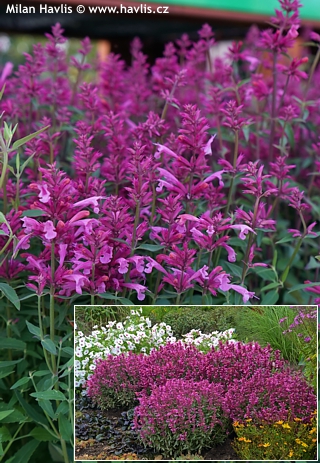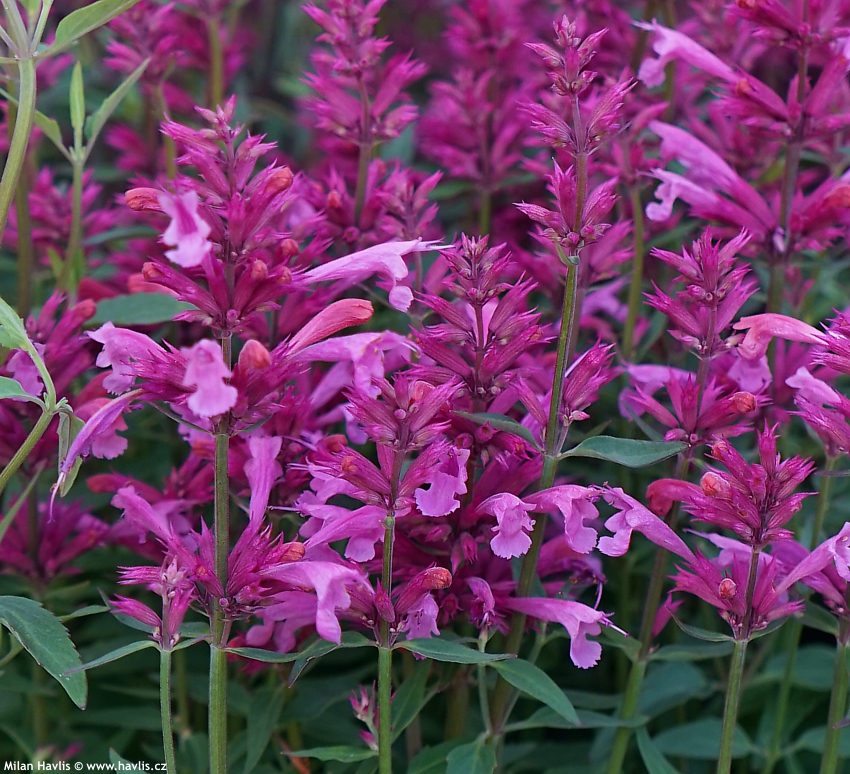Agastache 'ROSIE POSIE' agastache, hyssop
size/type
mid-sized perennial,mid-sized perennial
usual height
0,4-0,5m
usual width
0,3-0,5m
leaves
deciduous broadleaf
colour of leaves
flowers
showy
colour of flowers
blooming time
August-September
location
full sun
soil type
neutral to alkaline
soil moisture requirements
dry and sharply drained (xeriscape)
USDA zone (lowest)
7 (down to -23°C)
winter protection
for zone 5+6

for zone 7

categorized
Agastache
There are a number of hyssop species found in mostly temperate climate and only a few of them can survive winters of zones 5 or 6. However, it is so beautiful in full bloom that despite its rather short life many breeders work on achieving new hybrids that can cope with zone 6 winters provided suitable conditions. Rosie Posie (were the Teletubbies the inspiration for this name?) is an American variety of hyssop bred by Kevin A. Hurd and Hans A. Hansen from Walters Gardens Inc. Patent No. PP25857 was granted in 2015 and the plant belongs among Proven Winners® reliable varieties.Description of the plant:
Rosie Posie is an attractive hybrid perennial hyssop of compact habit. It makes dense clumps with thin, upright stems packed with flowers. Flowers are narrowly tubular, magenta pink, and open from just a tone deeper magenta-pink calyxes. Blooming begins in late July and continues for about two months or by the last sunny and warm days of early autumn. Flowers are so loved by most winged insects such as bees, bumble bees, and butterflies. Leaves are mid green with blue hues, matte, shortly lance-shaped, and mildly serrated at margins. They do not release the mint fragrance typical for many other short growing varieties. Rosie Posie agastache needs full sun only and looks stunning in mass plantings. And if I may suggest it is a showcase when you combine three different agastache colours in one bed. The plants demand free-draining soil because in wet ground their roots will most certainly die during winter.
If unsure about your soil type but still you want to grow agastache why don’t you make a raised bed and fill it with quality soil mixed with anything that provides sharp drainage. Such raised bed will come in handy for other plants demanding the same conditions so in the end you will create a whole new microcosmos for plants that were formerly banned from your garden. In return the plants will make your heart melt every time you gaze at them, watching them thrive and provide plenty of colour as well as bee food in late summer. Hardy to about -24 °C (USDA zone 6) and we recommend covering the clump with fir branches in winter.
Last update: 23-08-2021
QUICK PRICE OVERVIEW
CURRENTLY SOLD OUT
















